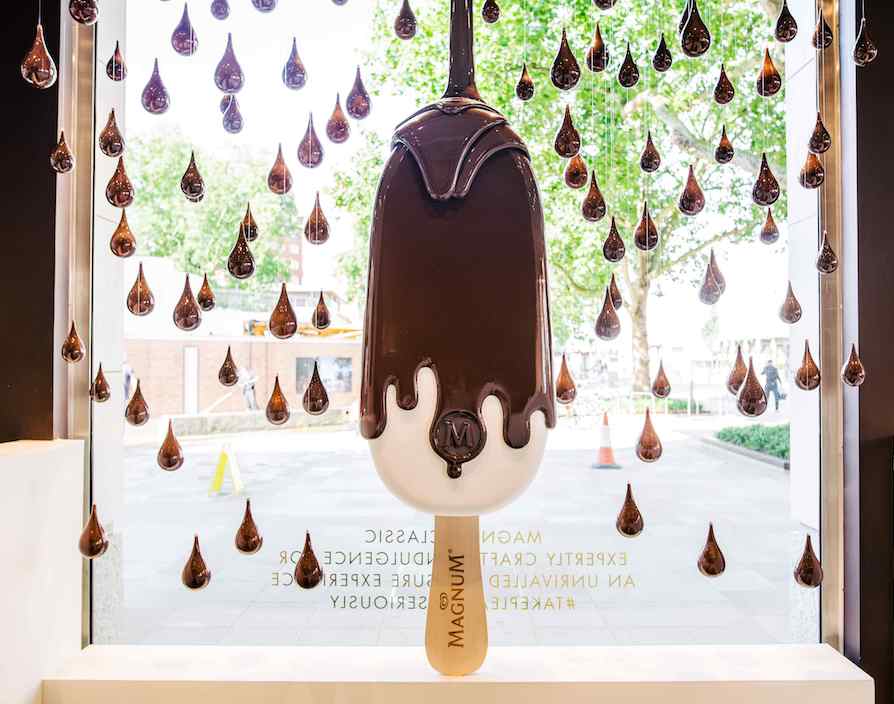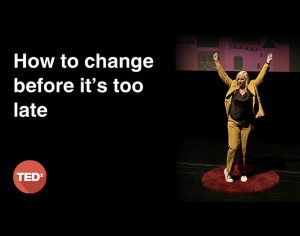A quick search on Google for the term pop-up retail and Appear Here is the first result that, well, appears. The UK pop-up marketplace was incorporated by Ross Bailey in 2011, with seed funding secured the following year to get him up and running for an official launch in 2014. By the time he was interviewed by Elite Business in January 2015, Appear Here had raised over £6m. “We’ve got a really good chance to become the best in the world at what we do and to become that de facto site for short-term retail,” he told us then. And in 2017, a $12m Series B round trebled the company coffers.
Bailey’s ultimate plan was to make it easier for small and large brands alike to secure retail space on a short-term basis and with the Appear Here platform that would make this possible. “There were all these little brands and people like us that wanted space and then you’ve got all these big international brands having the same problem,” said Bailey. “So whether you’re a little guy or a big guy, this is an issue. And then you’ve got all these landlords with empty space.”
Photo credit: Appear Here worked on a launch for Gwyneth Paltrow-owned Goop

Fast-forward a few years, however, and the term “empty space” can certainly be associated with retail but for the wrong reasons. Indeed, there has been no end of household retailers revealing plans to close stores. From Poundworld and Toys R Us to Dixons Carphone and Debenhams, irrespective of the sector, everyone on the high street is at risk. And as of May 2019, the British Retail Consortium revealed that high street vacancy rates have grown 10.2%. This particular study directed the blame at governmental charges although many have pointed the finger at online shopping.
The former COO at Odeon Cinemas and CEO at gaming retailer GAME, Ian Shepherd has experienced the changing market first-hand, which has prompted him to pen book Reinventing Retail. “The high street is challenged now in a way it never has been before,” he says, speaking with Elite Business. “A combination of the growth in internet shopping and rising costs of wages and taxes like business rates mean that making a profit from a shop is harder than ever.”
Shepherd suggests making it through the downturn will mean evolving and changing. “For retailers and hospitality businesses to survive they need to reinvent themselves,” he recommends. “That’s a hard thing for a business to do. Those who succeed can still do very well and there are retailers on our high streets performing strongly but those who are too slow pay a big price.”
Interestingly though, reinvention seems to be on the way as two e-commerce beasts are now on a mission to turn around the fortunes of the high street and they’re both looking to pop-up operations to get the job done.
First came eBay’s Retail Revival scheme, which takes the form of a one-year programme that will educate 64 small businesses on how they can leverage both online and physical retail. A key element of that will include the introduction of a pop-up store in Wolverhampton where 40 small retailers will be able to sell in the flesh.
Not wanting to be outdone, Amazon joined forces with Enterprise Nation, Square and Direct Line for Business to launch its Clicks and Mortar scheme. This will see ten pop-up stores arriving across the UK, the first of which opened in Manchester at the start of June, and will also run over the course of 12 months.
Although his background is in large scale retail in fixed locations, Shepherd declares pop-up shops prove that stores still have potential to run successfully and points to two things of interest to keep an eye on. “Firstly, there are small entrepreneurial businesses who have new ideas and use a pop-up to explore the market potential,” he says. “That’s great – and should demonstrate to landlords that long-term, inflexible rental agreements are a thing of the past for retail. The world is changing too quickly. Secondly, big internet brands are using pop-ups too. That’s really exciting because it proves the value of having both a strong online store and a physical presence. Giant online retailers exploring physical shops is the best news the high street could get because it shows clearly the opportunities for all retailers.”
As someone with over 25 years in retail, it’s refreshing to hear Shepherd isn’t blinkered by the way things were done in the past and is actively encouraging change with the likes of pop-ups. But will other leaders be so adaptable? With the internet in mind, he says it’s a challenge to retailers but not just for spending habits, more so because it’s changed the consumer mindset entirely. “We have access to product information, price comparisons and reviews from other consumers from all around the world,” Shepherd declares. “All of that changes what it means to be a retailer – you can no longer rely on people buying from you just because you’re their nearest outlet.”
So if pop-ups are one of said changes that retailers should be mindful of, just how exactly is the short-term market truly shaping up and how has it changed? Rupert Pick is the co-founder of experiential agency Hot Pickle, which specialises in pop-ups. Having launched the business a decade ago, he details that pop-ups were something of a novelty back then, largely dominated by fashion brands out to shift excess stock. “They weren’t seen as a marketing platform in the way they are today,” says Pick. “The change has been dramatic in scale, format, location etcetera. Today, brand and businesses use pop-ups for a myriad of reasons. The flash sale stores – offloading surplus stock – still exist but increasingly they are used as a communication tool.”
Pick knows what he’s talking about. The business has joined forces with the likes of Magnum, Hello Fresh and Sipsmith, with each out to achieve different results such as product launch, brand messaging and a timed shop moment. “I believe Veggie Pret started as a pop-up and was such a roaring success it has been rolled out as a permanent feature,” says Pick. Indeed, after a month-long Veggie Pret pop-up experiment in Soho three years ago, Pret a Manger subsequently started to launch permanent branches. The crusade continues today as the firm acquired Eat in May 2019, with a view of rebranding many of the 90 Eat stores to Veggie Pret.

Although many marketing methods are used by Hot Pickle to achieve client results, Pick claims the flexibility delivered by pop-ups is a big benefit and he’s pleased how much the space has come along since the company’s launch in 2009. “Ten years ago it was tough finding landlords to give you a space,” Pick recalls. “Today we have centres dedicated to pop-ups such as Boxpark and property platforms to make it easy to find a site.” He also highlights payment services that facilitate transactions with ease. “That certainly wasn’t the case ten years ago,” he adds.
Retail technology provider Aptos is among the companies supporting businesses with processes such as point of sale and VP for EMEA Richard Willis implores retailers not to overlook pop-ups. “With a low sales assistant to shopper ratio, advanced technology, strong social media links and the latest collections, pop-ups can offer shoppers an intimate, personalised and fun experience, making the shopper forget that they’re in a train station, at a festival or on a high street,” says Willis.
He went on to add that customers want more from time spent in shopping than just making a transaction. “Creating an in-store, digital experience that is based on the personalised preferences of each shopper will ultimately drive loyalty and cause shoppers to return to the shop floor,” Willis adds.
In a new announcement on Wednesday June 12, Direct Line for Business has revealed it’s been digging deeper into the pop-up sector on the back of its Amazon union. The company found that a trend called miniature pop-ups has also surfaced, whereby single shelves or countertops in a shop are rented out for as little as £1 a day rather than an entire stand or shopfront as is usually the case. By comparison though, larger pop-up spaces are still deemed affordable at an average rate of £342 a day.
With financials in mind, Pick refers to the costs involved as an enticing factor for brands to give pop-up spaces a go because you need only use materials that will be required for a short period of time. “If you’re running a store for three months you don’t need it to last a decade and you can choose your material accordingly,” he advises. “For highly seasonal products, pop-ups are a very attractive way of tapping into the peak sales period whilst not having to shoulder the fixed overheads of quiet periods. An ice-cream store is a perfect example of this. It makes very little commercial sense to be open in the winter but a lot of sense to be open when it’s hot and sunny.”

Although the likes of Amazon and eBay have turned their heads in the direction of pop-up retail, Pick doesn’t believe it will stay that way, even if they are trying to revive the high street. “I don’t think for one minute they’re moving away from online,” he claims. “They remain digital-first players but they’re not blind to the power of physical and human interactions.” Comparing the online with physical stores, Pick describes the former as “very efficient but somewhat solitary and soulless” while the best of the latter are deemed “entertaining, sociable and uplifting.” Putting forward a very good case in point, he asks the question: “When was the last time you posted about a purchase you made online? I suspect never but you may well have posted an update from a fabulous pop-up experience.”
But the big question remains. Can pop-ups turn around the high street’s fortunes? Amazon and eBay seemingly believe there’s potential to do so. “They can certainly help but it will take more than just a few pop-ups to save the high street,” states Pick. He reasons the “period of great change” we’re in currently, which can of course refer to the retail landscape specifically but also encompass the economic uncertainty surrounding Brexit.
“With the likes of Amazon, the high street simply cannot compete on price and to a certain extent convenience,” says Pick. “It needs to look to the areas of distinctiveness; service, experience, humanity and dial these up to the max.” He adds that the government and councils need to also provide favourable conditions for innovation and experimentation.
Shepherd believes there is an opportunity for the high street to come back from the brink but insists this can only be done with an open mind. “Retailers need to embrace the opportunities created by the changing consumer landscape,” he concludes. “Of course they need to trade on the internet but they also need to explore how to use customer data and insight to make their stores an important part of their consumer offering. That means stores which are great showcases for products and which are seamlessly connected to the internet channel.”
Ultimately it would be fair to say that the high street isn’t dead yet, rather that it’s having an extremely long nap. And by puckering up for true love’s kiss, which in this case appears to be a medley of innovation with efforts such as pop-ups and online, there’s a chance to regain consciousness and shake off what has arguably been a seriously bad dream. ![]()
Share via:


















































